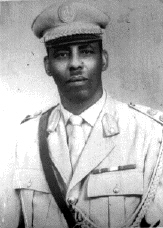| Somalia Table of Contents
The theoretical underpinning of the state ideology combined aspects of the Quran with the influences of Marx, Lenin, Mao, and Mussolini, but Siad Barre was pragmatic in its application. "Socialism is not a religion," he explained; "It is a political principle" to organize government and manage production. Somalia's alignment with communist states, coupled with its proclaimed adherence to scientific socialism, led to frequent accusations that the country had become a Soviet satellite. For all the rhetoric extolling scientific socialism, however, genuine Marxist sympathies were not deep-rooted in Somalia. But the ideology was acknowledged--partly in view of the country's economic and military dependence on the Soviet Union--as the most convenient peg on which to hang a revolution introduced through a military coup that had supplanted a Western-oriented parliamentary democracy. More important than Marxist ideology to the popular acceptance of the revolutionary regime in the early 1970s were the personal power of Siad Barre and the image he projected. Styled the "Victorious Leader" (Guulwaadde), Siad Barre fostered the growth of a personality cult. Portraits of him in the company of Marx and Lenin festooned the streets on public occasions. The epigrams, exhortations, and advice of the paternalistic leader who had synthesized Marx with Islam and had found a uniquely Somali path to socialist revolution were widely distributed in Siad Barre's little blue-and-white book. Despite the revolutionary regime's intention to stamp out the clan politics, the government was commonly referred to by the code name MOD. This acronym stood for Mareehaan (Siad Barre's clan), Ogaden (the clan of Siad Barre's mother), and Dulbahante (the clan of Siad Barre son-in-law Colonel Ahmad Sulaymaan Abdullah, who headed the NSS). These were the three clans whose members formed the government's inner circle. In 1975, for example, ten of the twenty members of the SRC were from the Daarood clan-family, of which these three clans were a part; the Digil and Rahanwayn, the sedentary interriverine clan-families, were totally unrepresented. 
Custom Search
Source: U.S. Library of Congress |
 Somalia's adherence to socialism became official on the first
anniversary of the military coup when Siad Barre proclaimed that Somalia
was a socialist state, despite the fact that the country had no history
of class conflict in the Marxist sense. For purposes of Marxist
analysis, therefore, tribalism was equated with class in a society
struggling to liberate itself from distinctions imposed by lineage group
affiliation. At the time, Siad Barre explained that the official
ideology consisted of three elements: his own conception of community
development based on the principle of self-reliance, a form of socialism
based on Marxist principles, and Islam. These were subsumed under
"scientific socialism," although such a definition was at
variance with the Soviet and Chinese models to which reference was
frequently made.
Somalia's adherence to socialism became official on the first
anniversary of the military coup when Siad Barre proclaimed that Somalia
was a socialist state, despite the fact that the country had no history
of class conflict in the Marxist sense. For purposes of Marxist
analysis, therefore, tribalism was equated with class in a society
struggling to liberate itself from distinctions imposed by lineage group
affiliation. At the time, Siad Barre explained that the official
ideology consisted of three elements: his own conception of community
development based on the principle of self-reliance, a form of socialism
based on Marxist principles, and Islam. These were subsumed under
"scientific socialism," although such a definition was at
variance with the Soviet and Chinese models to which reference was
frequently made.